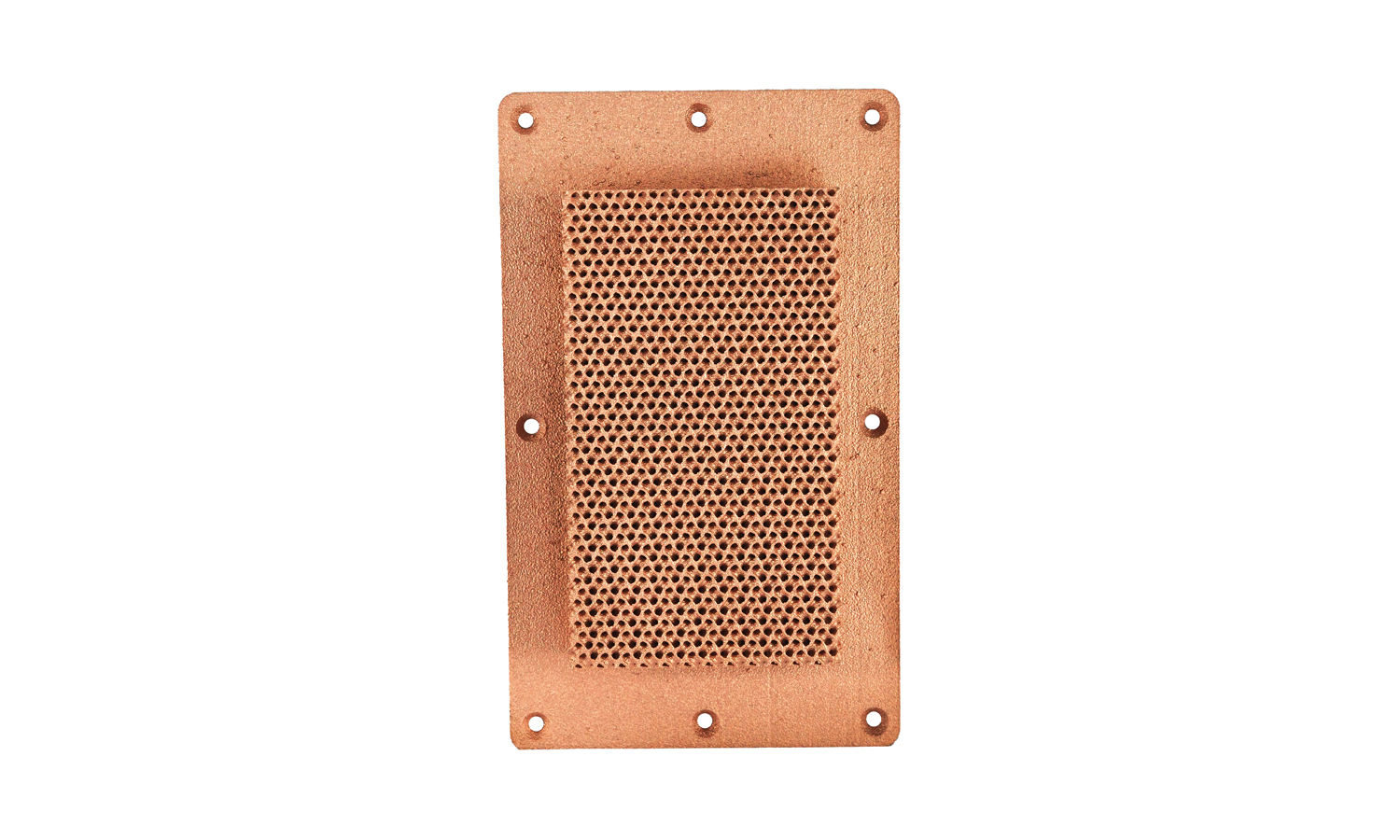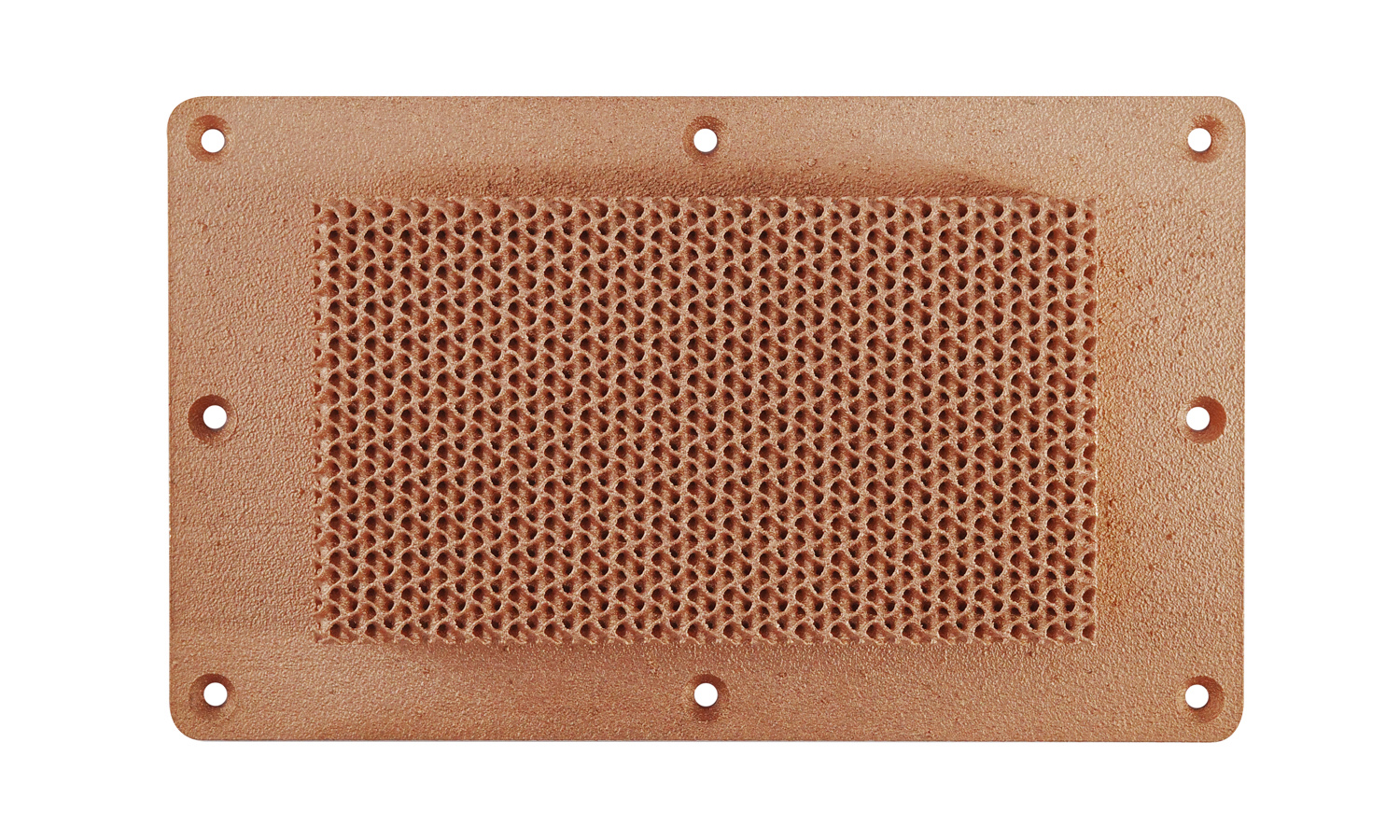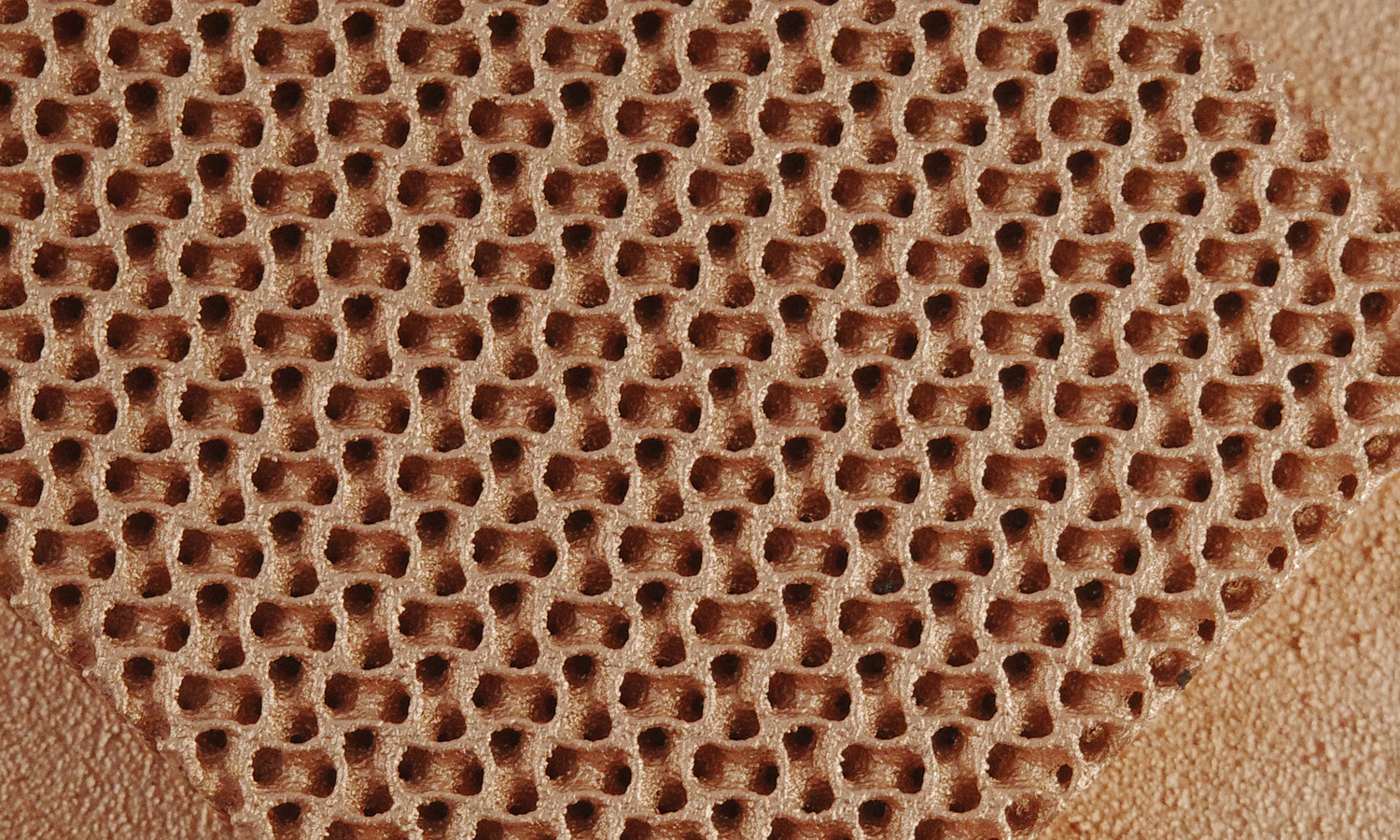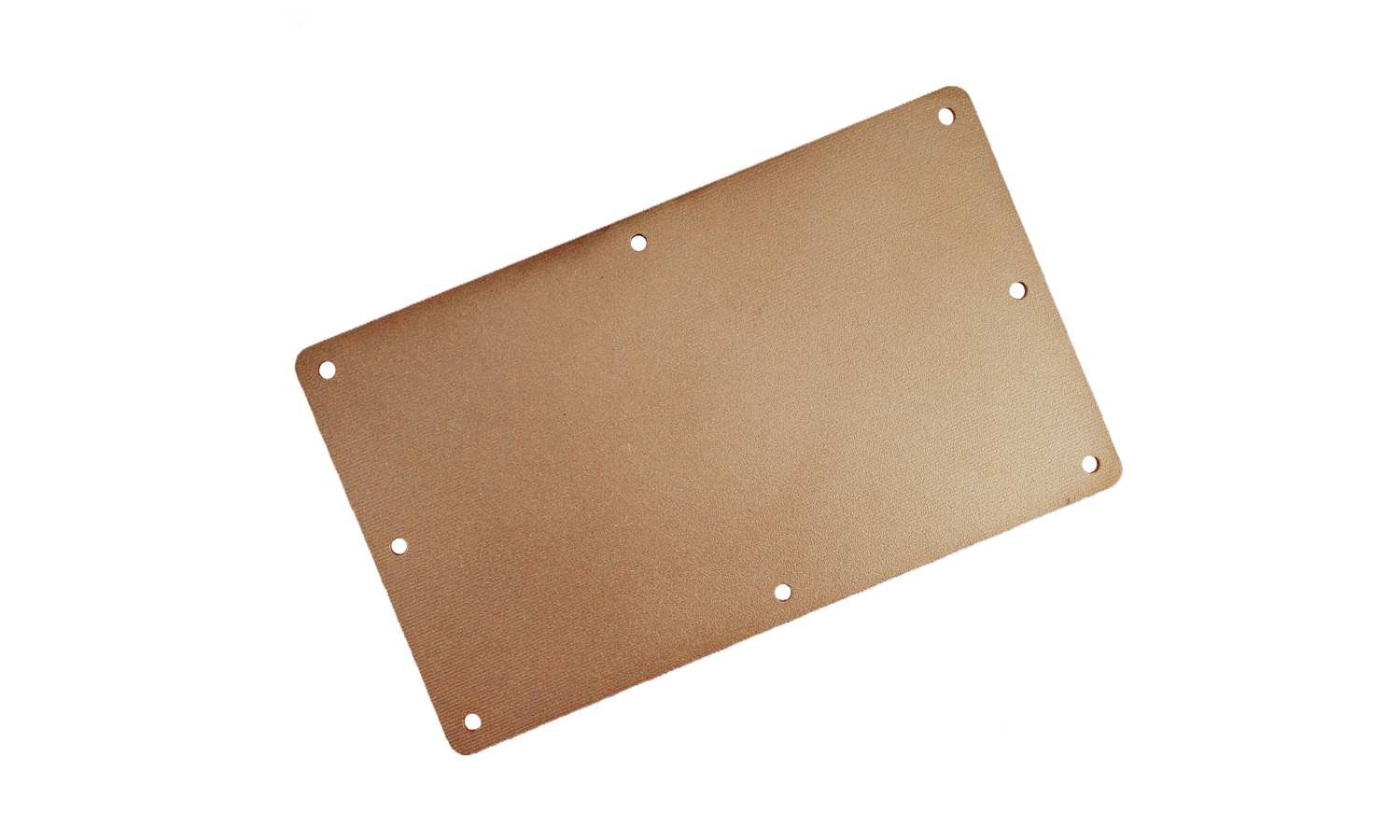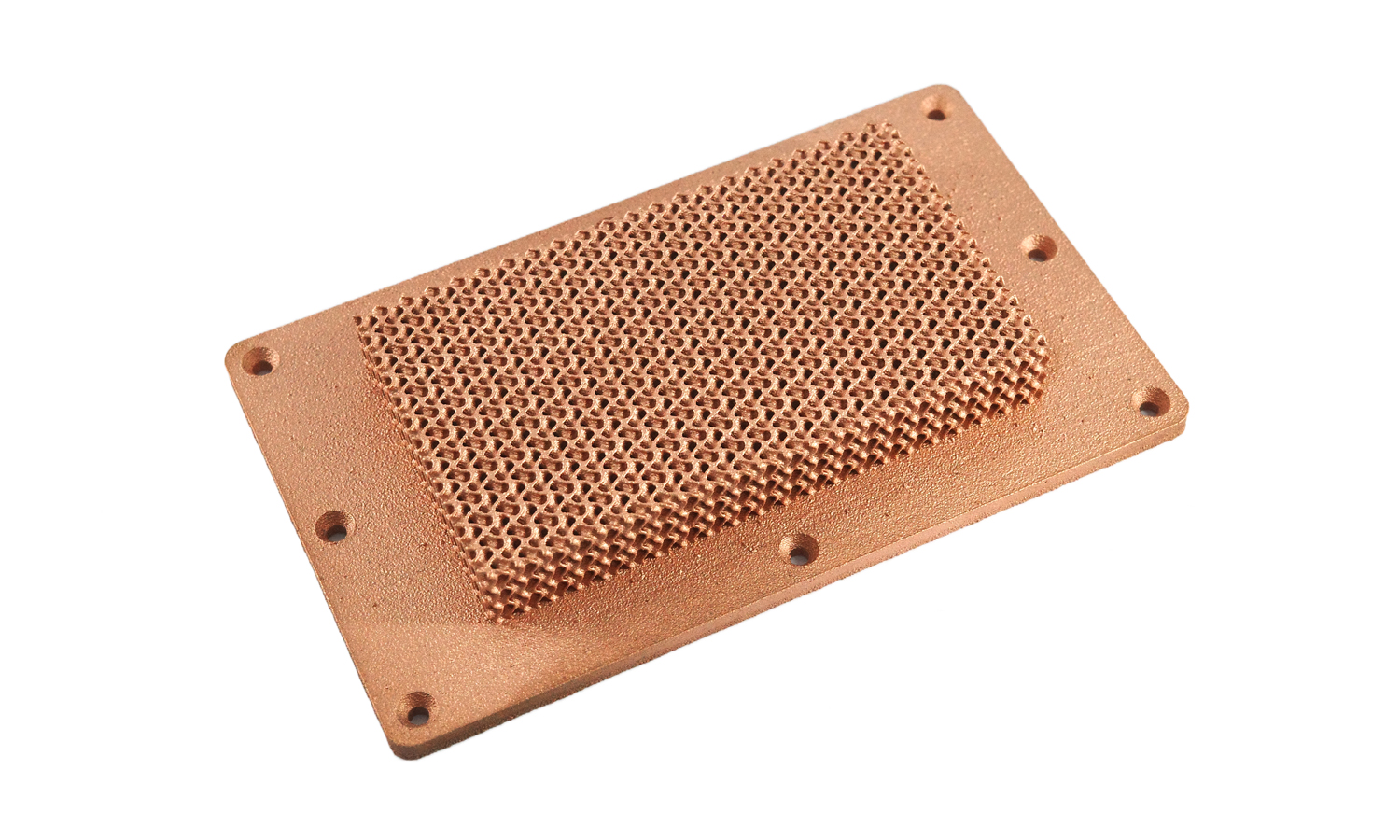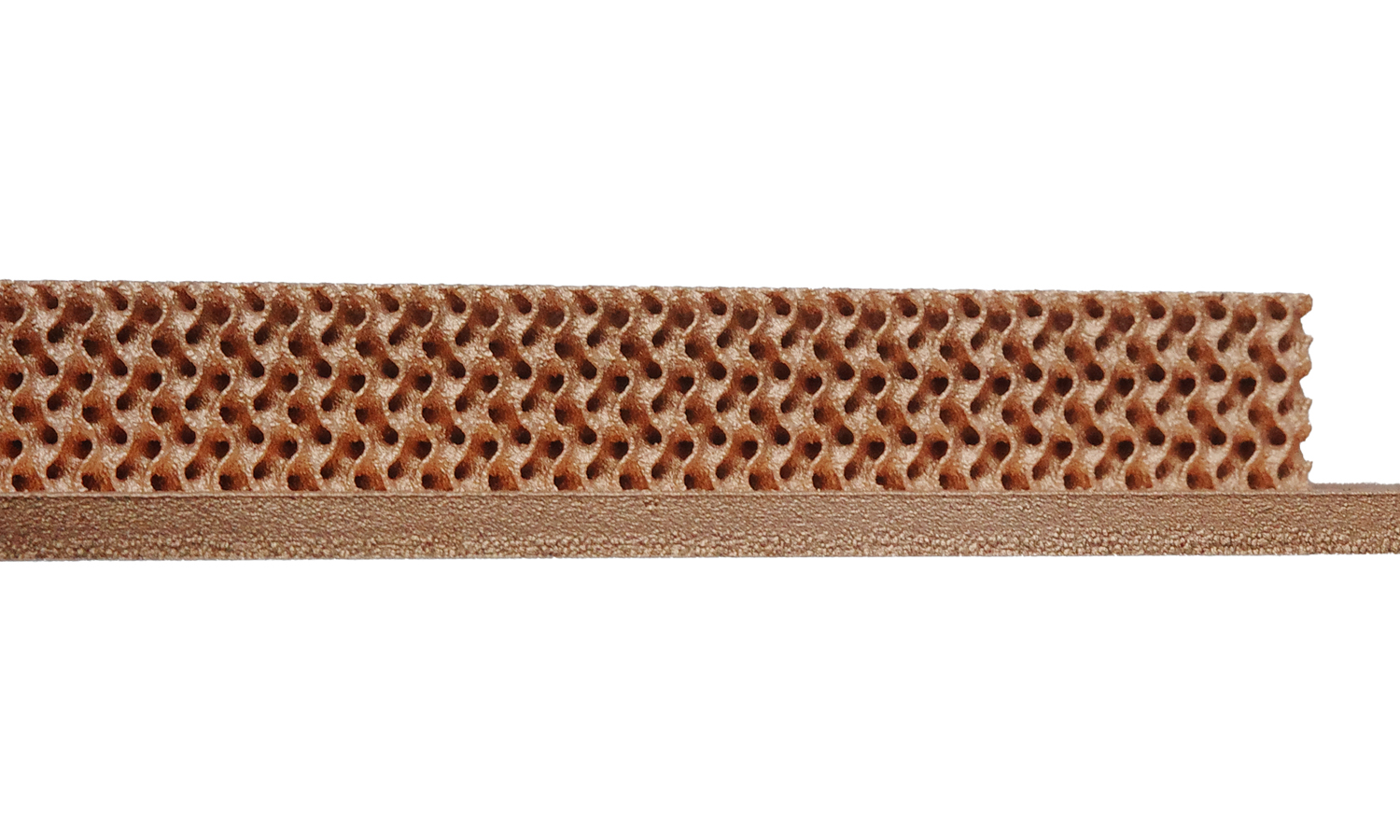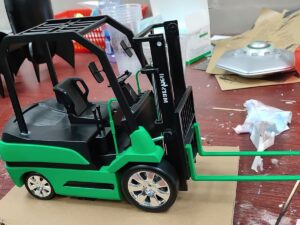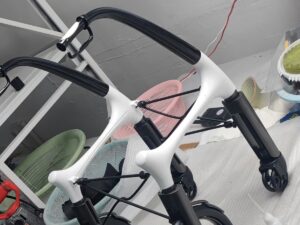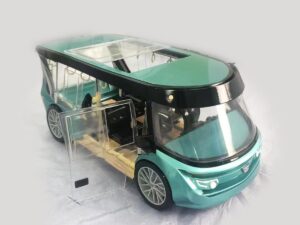Material Metal
Quantity 1 pcs
Price Range $100-1,000
Lead Time 2 workdays
Gallery
About Project
We're excited to showcase this intricate heat sink, a testament to the power of Laser Powder Bed Fusion (LPBF) 3D printing with pure copper. This sample demonstrates the incredible detail and performance achievable with this additive manufacturing technique, especially when paired with the right laser technology.
A Deep Dive into the Design
The heat sink's design is optimized for efficient thermal dissipation. Notice the complex cellular structure, meticulously arranged to maximize surface area. This intricate geometry allows for rapid heat transfer, crucial for keeping sensitive electronic components cool and operating at peak performance. Such a design would be incredibly challenging, if not impossible, to manufacture using traditional methods. LPBF, however, allows us to build these complex structures layer by layer, directly from a digital model.
The Green Laser Advantage
Printing pure copper presents unique challenges. Its high reflectivity makes it difficult to effectively absorb the energy from traditional infrared lasers used in most metal 3D printers. Copper reflects over 90% of that infrared light, causing issues like excessive vaporization, spattering, reduced material density, increased porosity, and decreased thermal and electrical conductivity in the final part. Furthermore, this reflected light can wreak havoc on the printer's delicate optical components.
That's where the green laser comes in. Copper absorbs green laser light much more effectively than infrared, significantly improving the printing process. This targeted energy input results in a superior final product with:
- Higher Density: Our green laser technique allows us to achieve a copper density of up to 99.8%, ensuring optimal thermal and electrical conductivity.
- Finer Detail: We can produce incredibly thin walls, down to a minimum of 0.08mm, enabling the creation of intricate designs like the delicate fins seen in this heat sink.
- Improved Precision: The controlled energy input of the green laser leads to more accurate and consistent layer deposition, resulting in parts with exceptional dimensional precision.
Beyond the Sample
This heat sink is just one example of what's possible with LPBF and green laser technology for pure copper. The ability to create high-density, intricate copper parts opens doors to innovation in various fields, including electronics, aerospace, medical devices, and more. Imagine custom-designed heat exchangers, high-performance electrical connectors, or even complex medical implants, all manufactured with the superior properties of pure copper.
Ready to explore the possibilities of 3D-printed pure copper? FacFox specializes in green laser pure copper 3D printing. Our expertise and cutting-edge technology allow us to produce high-quality, high-precision copper parts that meet your exact specifications. Contact us today to discuss your project and discover how we can help you unlock the full potential of copper in additive manufacturing.
Solution
- Step 1: A digital model of the heat sink was designed using CAD software.
- Step 2: The design was then sliced into numerous thin layers, typically ranging from 20 to 60 micrometers in thickness.
- Step 3: A build platform was prepared inside the LPBF machine.
- Step 4: A thin layer of pure copper powder was spread evenly across the build platform by a recoater blade.
- Step 5: A high-powered green laser was then directed across the powder bed, selectively melting the copper powder according to the sliced design data for that layer. This process was repeated for each layer.
- Step 6: The build platform was lowered by a distance equal to the layer thickness after each layer was scanned.
- Step 7: Another layer of copper powder was spread, and the laser melting process was repeated.
- Step 8: These steps were repeated until the entire heat sink was built, layer by layer.
- Step 9: Once the build was complete, the part was allowed to cool down within the machine.
- Step 10: The excess copper powder surrounding the part was removed, often through vacuuming or brushing.
- Step 11: The heat sink was then detached from the build platform, typically using wire EDM or another suitable separation technique.
- Step 12: Post-processing as heat treatment was performed to improve its final properties.
